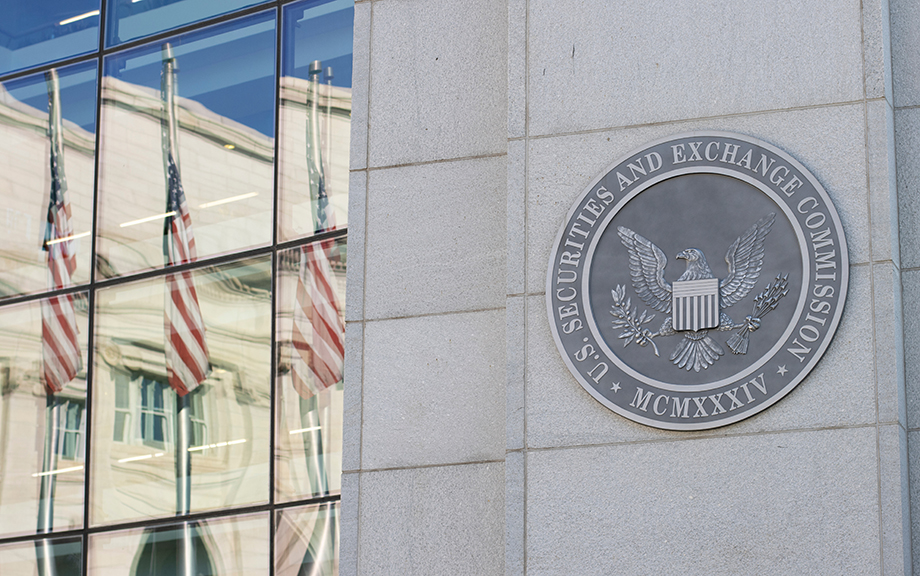Consumption Sensitivity of Uncertain Households
Gizem Kosar and Davide Melcangi

Uncertainty is a key component of everyday economic decisions of consumers and, perhaps not surprisingly, it plays a central role in economic models. According to economic theory, forward-looking consumers rely on their expectations and perceived uncertainty when making economic decisions. Nevertheless, measuring the uncertainty that households actually perceive, and how it affects consumer behavior, is challenging. The probabilistic nature of the Survey of Consumer Expectations enables us to make progress on this subject and to construct household-specific time-varying uncertainty. In our recent Staff Report, we empirically show that the marginal propensity to consume (MPC) is increasing and concave in perceived uncertainty. This novel empirical evidence poses a challenge for the conventional consumption-savings model with incomplete markets.
End‑of‑Month Activity Across the Treasury Market
Michael J. Fleming, Jonathan Palash-Mizner, and Or Shachar

In a 2024 post, we showed that interdealer trading in benchmark U.S. Treasury notes and bonds concentrates on the last trading day of the month, likely due to passive investment funds’ turn-of-month portfolio rebalancing. In this post, we extend our trading activity analysis to the full range of Treasury securities and market segments. We find that trading is even more concentrated on the last trading day of the month for other types of Treasury securities and in the dealer-to-customer segment of the market, with trading volume in off-the-run Treasuries twice as high as on other days, on average.
The Rise of Sponsored Service for Clearing Repo
Adam Copeland and R. Jay Kahn

Recently instituted rule amendments have initiated a large migration of dealer-to-client Treasury repurchase trades to central clearing. To date, the main avenue used to access central clearing is Sponsored Service, a clearing product that has, until now, received little attention. This post highlights the results from a recent Staff Report which presents a deep dive into Sponsored Service. Here, we summarize the description of the institutional details of this service and its costs and benefits. We then document some basic facts on how market participants use this service, based on confidential data.
Dutch Treat: The Netherlands’ Exorbitant Privilege in the Eighteenth Century
Stein Berre and Asani Sarkar

The term “exorbitant privilege” emerged in the 1960s to describe the advantages derived by the U.S. economy from the dollar’s status as the de facto global reserve currency. In this post, we examine the exorbitant privilege that accrued to the Netherlands in the eighteenth century, when the Dutch guilder enjoyed global reserve currency status. We show how the private actions of financial institutions created and maintained this privilege, even in the absence of a central bank. While privilege benefited the Dutch financial system in many ways, it also laid the seeds of later financial crisis.
A Country‑Specific View of Tariffs
Matthew Higgins and Thomas Klitgaard

U.S. trade policy remains in flux. Nevertheless, important elements of the new policy regime are apparent in data through July. What stands out are the large differences in realized tariff rates by trading partner, ranging from less than 5 percent for Canada and Mexico to 15 percent for Japan and to 40 percent for China. This post shows that the bulk of cross-country differences in tariff rates is explained by two factors: the U.S.-Canada-Mexico free trade agreement and differing sales shares in tariff-exempt categories.
Do Employers Comply with Pay Transparency Requirements in Job Postings?
Richard Audoly and Roshie Xing

Over the past few months, New Jersey and Vermont have joined a growing number of U.S. states in requiring employers to include an estimated salary range in their online job listings. Has this push for greater pay transparency been effective? In this post, we use granular data on U.S. job postings from Lightcast to assess employers’ compliance with these new regulations. Focusing on the jurisdictions that adopted pay transparency laws early on, we find that many employers ignore pay transparency requirements; roughly a quarter of job listings covered by these laws fail to include salary information.
A Historical Perspective on Stablecoins
Stephan Luck

Digital currencies have grown rapidly in recent years. In July 2025, Congress passed the “Guiding and Establishing National Innovation for U.S. Stablecoins Act” (GENIUS) Act, establishing the first comprehensive federal framework governing the issuance of stablecoins. In this post, we place stablecoins in a historical perspective by comparing them to national bank notes, a form of privately issued money that circulated in the United States from 1863 through 1935.
Calming the Panic: Investor Risk Perceptions and the Fed’s Emergency Lending during the 2023 Bank Run
Asani Sarkar, Martin Hiti, and Natalia Fischl-Lanzoni

In a companion post, we showed that during the bank run of spring 2023 investors were seemingly not concerned about bank risk broadly but rather became sensitized to the risk of only about a third of all publicly traded banks. In this post, we investigate how the Federal Reserve’s liquidity support affected investor risk perceptions during the run. We find that the announcement of the Fed’s novel Bank Term Funding Program (BTFP), and subsequent borrowings from the program, substantially reduced investor risk perceptions. However, borrowings from the Fed’s traditional discount window (DW) had no such effect.
Reading the Panic: How Investors Perceived Bank Risk During the 2023 Bank Run
Natalia Fischl-Lanzoni, Martin Hiti, and Asani Sarkar

The bank run that started in March 2023 in the U.S. occurred at an unusually rapid pace, suggesting that depositors were surprised by these events. Given that public data revealed bank vulnerabilities as early as 2022:Q1, were other market participants also surprised? In this post, based on a recent paper, we develop a new, high-frequency measure of bank balance sheet risk to examine how stock market investors’ risk sensitivity evolved around the run. We find that stock market investors only became attentive to bank risk after the run and only to the risk of a limited number (less than one-third) of publicly traded banks. Surprisingly, investors seem to have mostly focused on media exposure and not fundamentals when evaluating bank risk. In a companion post, we examine how the Federal Reserve’s liquidity support affected investor risk perceptions.
The Financial Stability Implications of Tokenized Investment Funds
Alexandros P. Vardoulakis, Francesca Carapella, JP Perez-Sangimino, Nathan Swem, and Pablo Azar

In a previous post, we provided background information about the emergence of tokenized investment funds and their use cases. These use cases are currently limited to the digital asset ecosystem. However, the recent approval of cryptocurrency exchange-traded funds (ETFs) and the passage of the GENIUS Act raise concerns about the impact of these tokenized investment fund to the broader financial system. In this post, we assess this impact by considering three economic mechanisms based in part on market participants’ investment strategies and liquidity needs. They include: liquidity transformation, interconnections between the digital asset and the traditional financial system, and transaction settlement. Through these mechanisms, tokenization of investment funds can bring about financial stability benefits in the form of reduced redemption pressures and additional sources of liquidity for fund issuances, but may also increase interconnectedness between the traditional financial system and digital asset ecosystem, thereby amplifying existing financial stability risks.










 RSS Feed
RSS Feed Follow Liberty Street Economics
Follow Liberty Street Economics